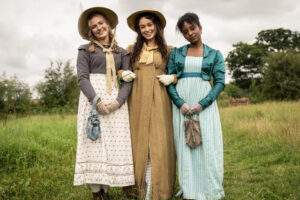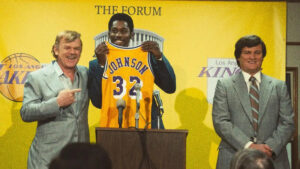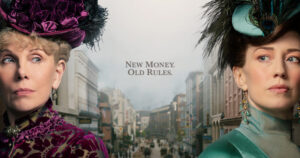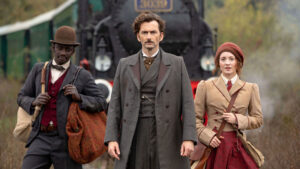The much-anticipated premier episode of the second season of Sanditon arrived with fanfare on PBS and because of that, you get to hear my thoughts about it. I’ll be clear right away, I’m not one to mince words. The episode borrowed far too much from The Gilded Age and that does not make me happy.
I don’t think the episode nearly met the low standards of The Gilded Age but it seemed the producers of Sanditon, at least in this first episode, used the same playbook as those who created the aforementioned series.
Now, perhaps it’s a good thing to borrow from a successful show but to my way of thinking, success is not equivalent to high quality. Let’s get on with it.
Blistering Pace
Sanditon blasts off with all the subtlety of an Elon Musk product launch. The opening iambic pentameter recap just wasted time reminding us of the events of the previous season. Then came the race to start every plotline as quickly as possible.
Sidney is dead, Charlotte is returning with her sister, Sanditon is rebuilt, loans must be repaid, miscarriages, army units, nefarious officers, dashing officers, children running under horses, women working for a living; it’s all happening too fast. Who, what, why, when, where? Doesn’t matter, stand aside, we’ve got to introduce every conflict as quickly as possible instead of letting them unfold organically.
Out of Time Sequences
Scenes out of time and out of place is a particular annoyance of mine although I know it doesn’t bother others as much. It’s a staple in the Gilded Age where one character has five days roll by and another only has a single afternoon pass when they meet for lunch.
It wasn’t nearly as egregious in Sanditon, but Charlotte went from applying for the position of governess to having lunch with the Parkers and then to walking back from the job interview. Maybe the good Doctor Who intervened somewhere to make that possible.
Contrived Conflict
The majority of the conflict seem to come out of nowhere. Why does Miss Lamb hate the artist who will clearly be her love interest? The argument between Charlotte and her employer was out of place. Even the military unit’s presence in town didn’t make a lot of sense. As for the two wayward children, they seemed almost like alien entities. Why are they here? What’s going on? Don’t know, don’t care, we need plot!
Now, I’m not a stickler for this sort of thing. You’ve got to have conflict and sometimes you need contrivance to make it happen. A few coincidences and events I don’t mind, but it was just one after the next in the premier episode.
Not All Bad
The middle section of the show slowed down to a calmer pace. Particularly, the story of Lady Esther Babbington arrived organically and makes sense. The plot line of the loaned money also seemed very natural and normal as did the cliffhanger regarding Miss Lamb.
The acting is universally strong and that stands in stark contrast to the Gilded Age. The director lets the actors act rather than forcing stilted conversation on them. They speak to one another rather than at each other. It is this quality acting that largely saves Sanditon in my opinion.
Conclusion
I hold out every hope the frantic pace of the premier episode of the second season will disappear into the background. That the show, with all the conflict set in motion, will move forward at a more regular pace.
A boy can hope, can’t he?
Tom Liberman




